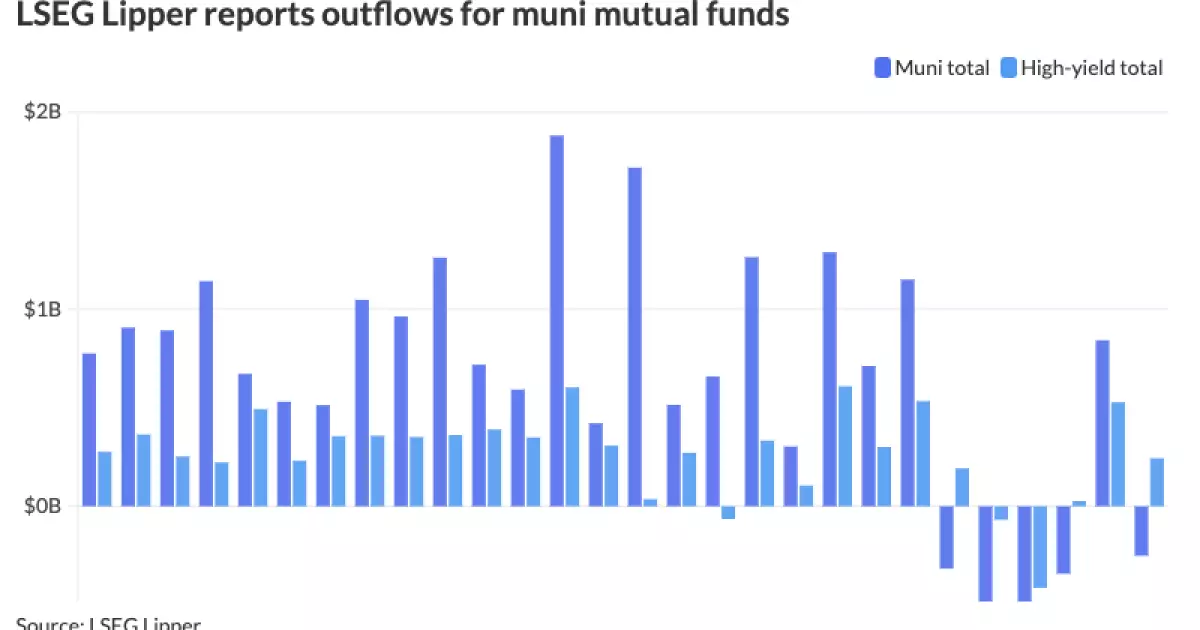The municipal bond market recently showcased remarkable activity influenced by complex interplay factors affecting its dynamics. While investors have observed slight firming in municipal securities, vital levels of yields were recorded, with the backdrop of several critical developments. This article delves into the shifts within the municipal bond landscape, driven by a combination of market conditions and institutional activities.
Market Resilience Amid Turbulence
On Thursday, the municipal market showed a degree of resilience, primarily propelled by the recent $1.6 billion upsizing of the Triborough Bridge and Tunnel Authority’s bond issuance. As reported, the market was not only reacting favorably to lower U.S. Treasury yields but was also witnessing institutional outflows that could typically flag volatility, yet the municipal bonds remained buoyant. Often considered a safe haven, municipal bonds sought to capitalize on the recent lower yield environment, recording a notable ratio in comparison to U.S. Treasuries—67% for two-year bonds and climbing sequentially to 84% for thirty-year bonds.
Interestingly, expert analysis highlighted how institutional investors prudently navigated the market’s fluctuations. Kim Olsan, a senior fixed income portfolio manager at NewSquare Capital, noted that while munis responded to a more favorable UST session the previous day, their supply limitations hampered the effort to align with the considerable rally evident in taxable securities, which surged by 10 to 15 basis points.
Despite a firmer stance in municipal bonds, the surrounding environment still signals a cautious approach among buyers. Recent trading trends illustrate that customer buying remained strong across all maturities. Particularly, the one- to three-year maturity range has shown signs of robust interest. This increased buyer engagement can be partly attributed to the introduction of higher yield opportunities available across many quality credits. Higher yields are often a double-edged sword, as they can attract buyers while also hinting at underlying volatility, particularly with the risk of rising rates.
Moreover, Olsan’s insights painted a compelling picture: increased buying was observed in the short maturities, with dealers experiencing significant spreads compared to typical levels. This context of heightened volatility invites scrutiny, as selling pressures might affect future rate directions. As the market navigates these conditions, stability remains a focal concern for investors.
The Influence of Recent Economic Data and Mutual Fund Trends
The backdrop of “bond-friendly” economic reports, including producer and consumer price indices, served to bolster confidence among municipal bond investors. However, it’s important to note that while these data points signal favorable conditions, investor behavior displayed a more intricate trend. The LSEG Lipper data highlighted substantial outflows from the municipal bond mutual funds as $251.2 million was withdrawn in the week ending Wednesday. Such figures juxtapose with an influx of $243.7 million into high-yield funds, suggesting a potential flight towards higher risks amidst the usual safety associated with municipal bonds.
This scenario reveals a potentially shifting landscape within investor sentiment; despite evident strength in the bond market, coupled with lower yield opportunities, the trends suggest a flight to riskier assets among some segments. This dynamic will likely require market participants to tread carefully as they gauge both systemic risks inherent in municipal bonds and their position relative to broader economic indicators.
As the primary market churned with active issuances on Thursday, noteworthy pricing developments were observed across various bond offerings. The upsizing of the Triborough Bridge and Tunnel Authority’s revenue bonds underscored a healthy appetite for municipal debt, with yields reflecting marginal contractions as they attracted various institutional investors. This trend continued with substantial issuances from entities such as the University of Colorado and Yale University, which saw their bonds priced competitively across different maturities.
Interestingly, many bonds are trading at yields that are not only competitive but also above comparable credits—a strategy leveraged by entities, especially in highly-rated sectors. As such, it represents a marketing strategy to boost the appeal of longer-dated securities while mitigating concerns surrounding credit quality and market volatility.
The resurgence of buyer activity coupled with nuanced branding of municipal bond offerings reflects a complex but resilient municipal landscape, which experienced slight firming despite external pressures. The enabling conditions present in the market underscore the multifaceted dynamics shaping investor preferences and institutional strategies, thus offering a glimmer of insight into future trends expected to define the municipal bond market in the weeks to come.

